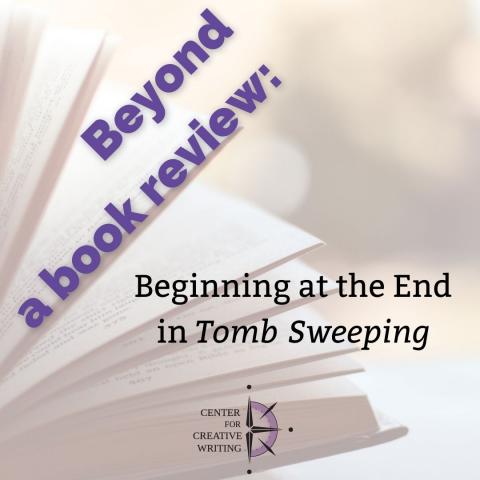
Shawna Ayoub moves "beyond a book review" in not only recommending great books by diverse writers, but highlighting a technique to apply to your own writing.
Tomb Sweeping by Alexandra Chang
Tomb Sweeping is a collection of 15 character-driven short stories about Chinese or Chinese-American characters written by Alexandra Chang. The collection is an interesting one, as the theme that unifies it is Chinese generational experience rather than style or genre. This collection can feel a bit like a hodge-podge, but that’s what makes it work—you come away at the end realizing you’ve experienced family, that strange mix of everything and everyone that sometimes chafes and sometimes flows together.
I liked this collection. I read it over several nights from the comfort of bed. Every story was a surprise, yet all of them felt familiar. This is likely because I am first generation American with an immigrant father, but I think this collection bridges the gap between those of us identified as American Other and simply American.
Telling a story in reverse
The story that surprised me most is the one we’ll take our writing prompt from. It is called “Li Fan,” is very short, and you can read it here. The joy of “Li Fan” is that it is told in reverse. However, we get a whole story in either direction.
Telling a story in reverse is a prompt I like to use in trauma writing. It frees the writer from having to wade through the difficult parts of the story to find the point they want to make or reach by telling it. I also use this prompt for writers who need to become unstuck. At its core, it’s incredibly simple: the prompt requests that you change your perspective. It forces you to reconsider what is important by examining where you are going.
There are plenty of other strong stories in Tomb Sweeping. I love the titular story, which tells of the death of a grandfather. I also loved “Cat Personalities,” a romp that explores a friend breakup through gossiping about how pets are like their people. Frankly, this book reads like a collection of stories from prompts and that interests me as a writer. It’s definitely one I want to look at again. If your curiosity is piqued, consider purchasing Tomb Sweeping at Bookshop.org and supporting independent bookstores across the U.S.
Writing prompt
For 15 minutes, tell a story beginning at the end. If you need to, take a piece you’ve already written and write it in reverse. Pay attention to what is revealed about the story as you write. What becomes unnecessary? What is essential? Where do you see gaps?
This is a great exercise for, again, addressing difficult topics or getting unstuck, but it is also fantastic for editing.
Will you try this exercise? Read this book? Share with us in the comments.
Related reading
Beyond a Book Review: The “What if?” of The Deep Sky
Beyond a Book Review: Grief and Hope in All We Are Told Not to Touch
Beyond a Book Review: Once Upon a Time in Dovelion
Beyond a Book Review: Narrators and Compassion in Finding La Negrita
Beyond a Book Review: Research as Connection in Through the Banks of the Red Cedar
Beyond a Book Review: Intuition in River Woman, River Demon
Beyond a Book Review: Timeline(s) in Becoming AppalAsian
Beyond a Book Review: Unwieldy Creatures and retelling our stories
Beyond a Book Review: Containers as safe spaces in Nonwhite and Woman
Beyond a Book Review: Footnotes in Belly to the Brutal
Want to receive prompts, tips, and inspiration like this in your inbox every Sunday morning? Join our email list community! You will receive weekly advice, a year’s worth of weekly writing prompts as a FREE download, and be eligible to participate in our monthly photo prompt contest for a chance to share an original piece of writing with our community of more than 2,500 writers.
